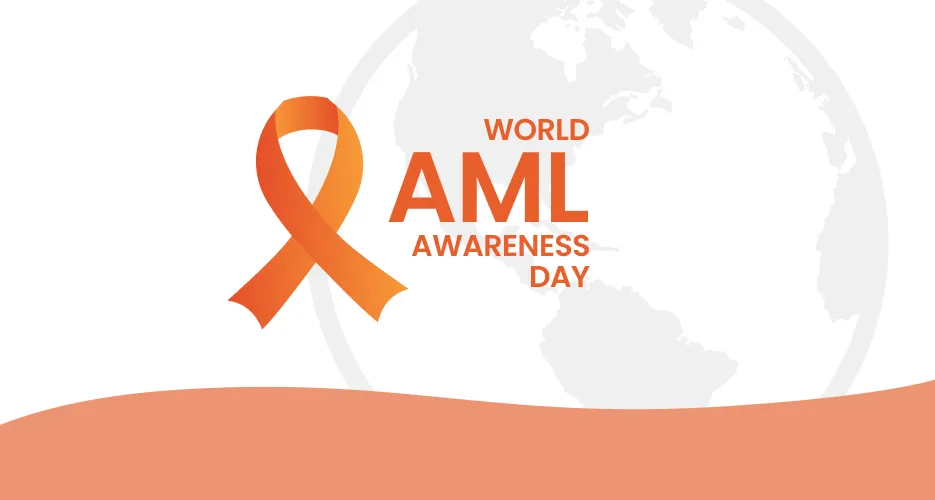Understanding Your CLL Treatment Options: Fixed-Duration vs. Continuous-Duration Therapies

On June 18th, as part of HealthTree’s CLL Webinar Program, CLL specialist Dr. Alvaro Alencar from the University of Miami Sylvester Comprehensive Cancer Center shared insight about the differences between fixed-duration and continuous-duration CLL medicines.
Fixed-duration therapies are those that you take for a specific period, usually a few weeks or months, following a defined schedule. Once that period is complete, ideally, you reach a point where you can maintain your health safely without ongoing treatment. An example of this type of medication would be antibiotics.
Continuous-duration medications are those received regularly for a long period or even indefinitely. The goal is to keep your condition under control and hopefully prevent it from worsening. For example, high blood pressure treatment.
Similarly, for CLL, we can find both therapeutic strategies, and it’s important to understand their pros and cons to understand which one might be the best fit for you. Watch the event's recording below or read the summary.
History of CLL Treatments
Before the early 2000s, only chemoimmunotherapy was used to treat chronic lymphocytic leukemia (CLL). Over time, targeted therapies like the BTK inhibitor ibrutinib (Imbruvica) started being used to treat high-risk CLL cases like patients with 17p deletion. As specialists saw that these newer targeted therapies were more effective and had fewer side effects than chemoimmunotherapy, they started being used beyond high-risk CLL, expanding to all CLL types. Now, chemotherapy is no longer used to treat CLL.
When To Start CLL Treatment?
Dr. Alencar stated that if CLL is not causing trouble, treatment does not need to start (click here to learn about the requirements to start therapy). Instead, the patient and doctor monitor the disease until it reaches a point requiring treatment. This ‘Watch and Wait’ period has not been found to negatively impact CLL patients’ length and health-related quality of life.
Pros and Cons of Fixed-Duration CLL Therapies
The standard fixed-duration CLL therapy is venetoclax (Venclexta, AbbVie) in combination with obinutuzumab (Gazyva, Genentech). The treatment is so potent at killing CLL that a cautious ramp-up period during the first month is required.
Venetoclax is a daily pill. Obinutuzumab is an infusion administered at a medical center at several intervals over the course of six months. Although more work is required in the beginning, at the end of the one-year treatment, most patients enjoy a multi-year therapy break before needing to start another CLL treatment.
Pros and Cons of Continuous-Duration CLL Therapies
Continuous-duration therapy with BTK inhibitors involves daily pills taken indefinitely until treatment intolerance. BTK inhibitors help limit CLL cells from multiplying further, keeping the disease at bay as long as the patient takes the pill. Over time, CLL cells may decrease.
However, the quick killing seen with venetoclax is not seen with BTK inhibitors. Although the pill is easy to take and requires fewer lab check-ins than venetoclax, the downside to BTK inhibitors is that the medicine is taken long-term, thus exposing the patient to potential long-term side effects.
BTK inhibitors include acalabrutinib (Calquence, AstraZeneca), zanubrutinib (Brukinsa, BeiGene), and ibrutinib (Imbruvica, Janssen Biotech). Acalabrutinib and zanubrutinib are second-generation BTK inhibitors with fewer heart-related side effects than ibrutinib.
Click here to learn about the average time CLL medicines work based on your CLL type.
What Factors Influence the Choice of My CLL Treatment?
Factors such as CLL disease location (more in the lymph nodes vs. more in the blood), a patient’s ability to travel to a treatment center, comorbidities, insurance approval, genetic markers of the disease, and personal preferences all play a role in customizing a patient’s CLL treatment plan.
Dr. Alencar stated that there is no right answer. Patients starting in one class of therapy, like BTK inhibitors, eventually will likely need to switch to a different class, like venetoclax, years later and vice versa.
Future Directions of CLL Therapies
Dr. Alencar shared that the defined lines of fixed and continuous-duration CLL therapies are becoming more blurred as new treatment strategies combine the various medicine classes for different periods, hoping to improve effectiveness. Examples include doublet and triplet combination clinical trials using BTK inhibitors, venetoclax, and obinutuzumab.
In conclusion, the fixed-duration CLL therapy combination of venetoclax and obinutuzumab offers a highly effective treatment regimen that allows many patients a therapy break, although the initial treatment ramp-up is intensive. In contrast, continuous-duration therapies using BTK inhibitors require indefinite daily administration but present fewer immediate side effects, though long-term usage raises concerns about chronic side effects. As the landscape of CLL therapies continues to evolve, integrating new treatment strategies has the potential to improve patient outcomes.
Audience Q&A
During the event, Dr. Alencar answered several patient questions. Some of these included:
- Is there a certain point at which CLL cells build up resistance to BTK inhibitors? (Timestamp 39:52)
- Is CAR T-cell therapy considered a fixed-duration treatment? (Timestamp 43:29)
- Is obinutuzumab considered a fixed-duration therapy? (Timestamp 47:22)
To listen to these questions' answers, watch the event’s recording by clicking here.
Join the HealthTree for CLL Newsletter to Learn More!
We invite you to click the button below to subscribe to our newsletter and stay updated on the latest advancements in chronic lymphocytic leukemia and sign up for our next webinar!
On June 18th, as part of HealthTree’s CLL Webinar Program, CLL specialist Dr. Alvaro Alencar from the University of Miami Sylvester Comprehensive Cancer Center shared insight about the differences between fixed-duration and continuous-duration CLL medicines.
Fixed-duration therapies are those that you take for a specific period, usually a few weeks or months, following a defined schedule. Once that period is complete, ideally, you reach a point where you can maintain your health safely without ongoing treatment. An example of this type of medication would be antibiotics.
Continuous-duration medications are those received regularly for a long period or even indefinitely. The goal is to keep your condition under control and hopefully prevent it from worsening. For example, high blood pressure treatment.
Similarly, for CLL, we can find both therapeutic strategies, and it’s important to understand their pros and cons to understand which one might be the best fit for you. Watch the event's recording below or read the summary.
History of CLL Treatments
Before the early 2000s, only chemoimmunotherapy was used to treat chronic lymphocytic leukemia (CLL). Over time, targeted therapies like the BTK inhibitor ibrutinib (Imbruvica) started being used to treat high-risk CLL cases like patients with 17p deletion. As specialists saw that these newer targeted therapies were more effective and had fewer side effects than chemoimmunotherapy, they started being used beyond high-risk CLL, expanding to all CLL types. Now, chemotherapy is no longer used to treat CLL.
When To Start CLL Treatment?
Dr. Alencar stated that if CLL is not causing trouble, treatment does not need to start (click here to learn about the requirements to start therapy). Instead, the patient and doctor monitor the disease until it reaches a point requiring treatment. This ‘Watch and Wait’ period has not been found to negatively impact CLL patients’ length and health-related quality of life.
Pros and Cons of Fixed-Duration CLL Therapies
The standard fixed-duration CLL therapy is venetoclax (Venclexta, AbbVie) in combination with obinutuzumab (Gazyva, Genentech). The treatment is so potent at killing CLL that a cautious ramp-up period during the first month is required.
Venetoclax is a daily pill. Obinutuzumab is an infusion administered at a medical center at several intervals over the course of six months. Although more work is required in the beginning, at the end of the one-year treatment, most patients enjoy a multi-year therapy break before needing to start another CLL treatment.
Pros and Cons of Continuous-Duration CLL Therapies
Continuous-duration therapy with BTK inhibitors involves daily pills taken indefinitely until treatment intolerance. BTK inhibitors help limit CLL cells from multiplying further, keeping the disease at bay as long as the patient takes the pill. Over time, CLL cells may decrease.
However, the quick killing seen with venetoclax is not seen with BTK inhibitors. Although the pill is easy to take and requires fewer lab check-ins than venetoclax, the downside to BTK inhibitors is that the medicine is taken long-term, thus exposing the patient to potential long-term side effects.
BTK inhibitors include acalabrutinib (Calquence, AstraZeneca), zanubrutinib (Brukinsa, BeiGene), and ibrutinib (Imbruvica, Janssen Biotech). Acalabrutinib and zanubrutinib are second-generation BTK inhibitors with fewer heart-related side effects than ibrutinib.
Click here to learn about the average time CLL medicines work based on your CLL type.
What Factors Influence the Choice of My CLL Treatment?
Factors such as CLL disease location (more in the lymph nodes vs. more in the blood), a patient’s ability to travel to a treatment center, comorbidities, insurance approval, genetic markers of the disease, and personal preferences all play a role in customizing a patient’s CLL treatment plan.
Dr. Alencar stated that there is no right answer. Patients starting in one class of therapy, like BTK inhibitors, eventually will likely need to switch to a different class, like venetoclax, years later and vice versa.
Future Directions of CLL Therapies
Dr. Alencar shared that the defined lines of fixed and continuous-duration CLL therapies are becoming more blurred as new treatment strategies combine the various medicine classes for different periods, hoping to improve effectiveness. Examples include doublet and triplet combination clinical trials using BTK inhibitors, venetoclax, and obinutuzumab.
In conclusion, the fixed-duration CLL therapy combination of venetoclax and obinutuzumab offers a highly effective treatment regimen that allows many patients a therapy break, although the initial treatment ramp-up is intensive. In contrast, continuous-duration therapies using BTK inhibitors require indefinite daily administration but present fewer immediate side effects, though long-term usage raises concerns about chronic side effects. As the landscape of CLL therapies continues to evolve, integrating new treatment strategies has the potential to improve patient outcomes.
Audience Q&A
During the event, Dr. Alencar answered several patient questions. Some of these included:
- Is there a certain point at which CLL cells build up resistance to BTK inhibitors? (Timestamp 39:52)
- Is CAR T-cell therapy considered a fixed-duration treatment? (Timestamp 43:29)
- Is obinutuzumab considered a fixed-duration therapy? (Timestamp 47:22)
To listen to these questions' answers, watch the event’s recording by clicking here.
Join the HealthTree for CLL Newsletter to Learn More!
We invite you to click the button below to subscribe to our newsletter and stay updated on the latest advancements in chronic lymphocytic leukemia and sign up for our next webinar!

about the author
Megan Heaps
Megan joined HealthTree in 2022. She enjoys helping patients and their care partners understand the various aspects of the cancer. This understanding enables them to better advocate for themselves and improve their treatment outcomes.
More on HealthTree Programs
Trending Articles
Get the Latest Leukemia Updates, Delivered to You.
By subscribing to the HealthTree newsletter, you'll receive the latest research, treatment updates, and expert insights to help you navigate your health.









